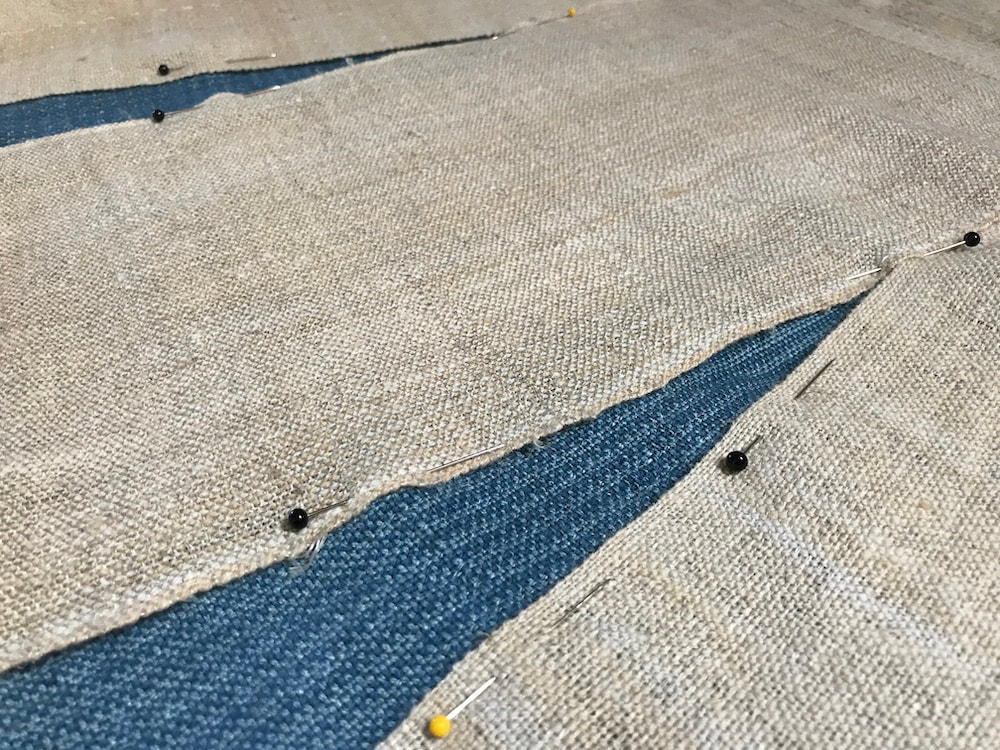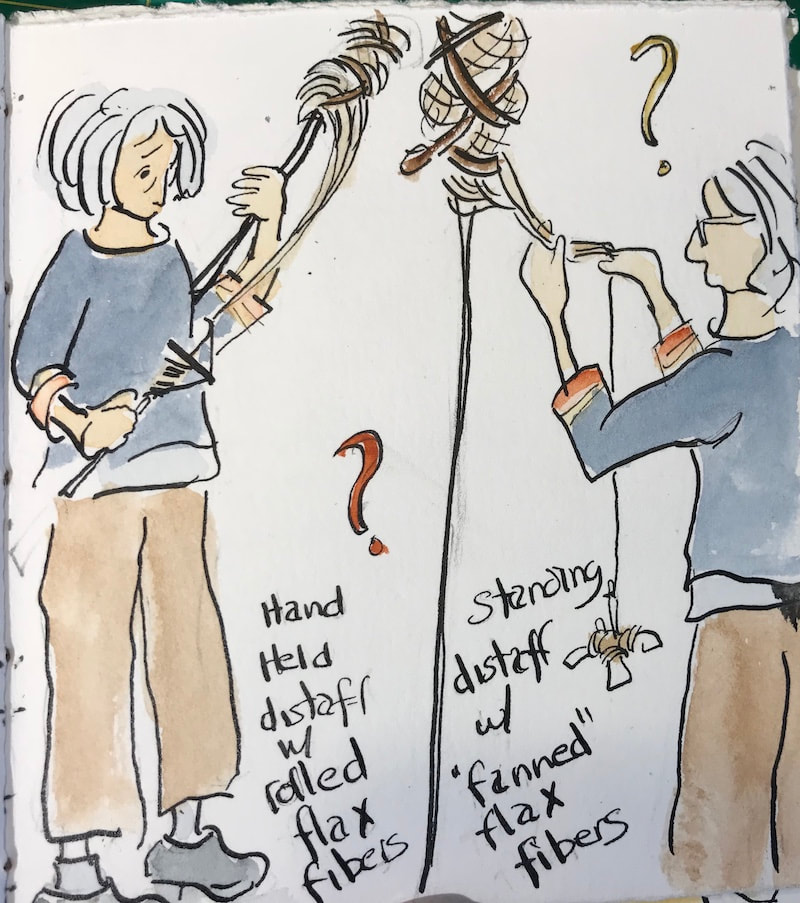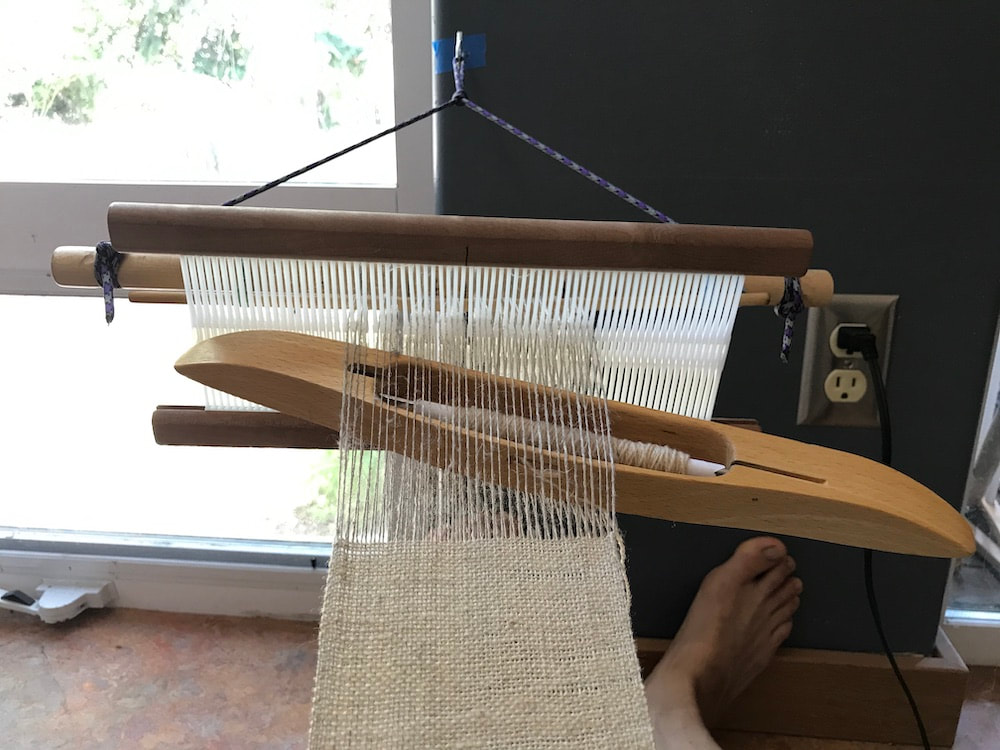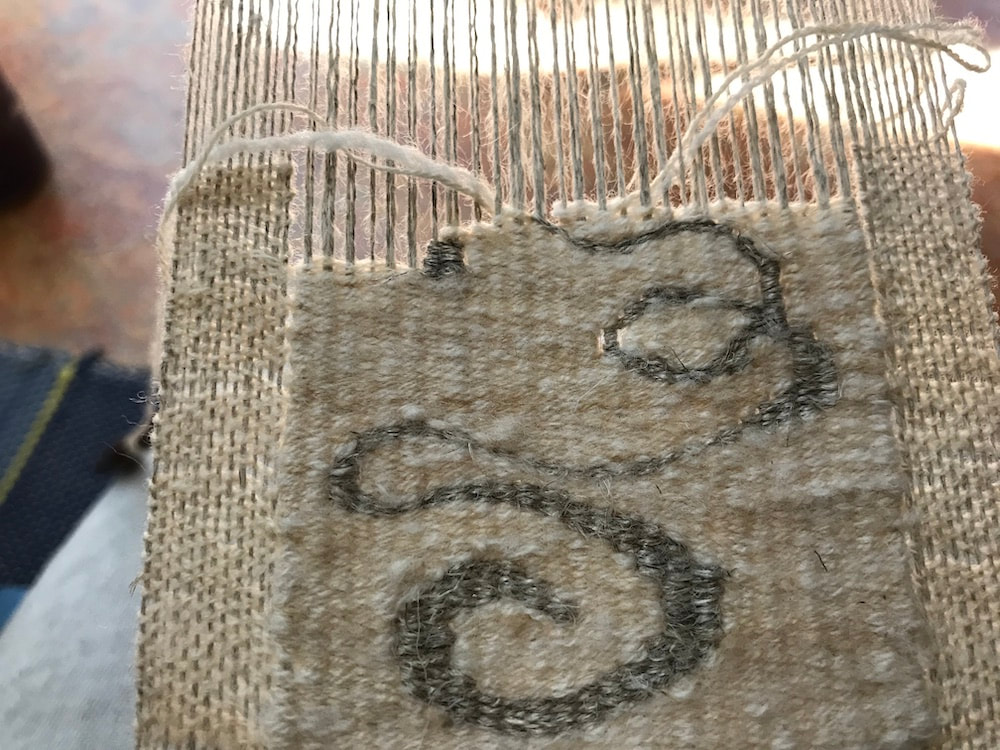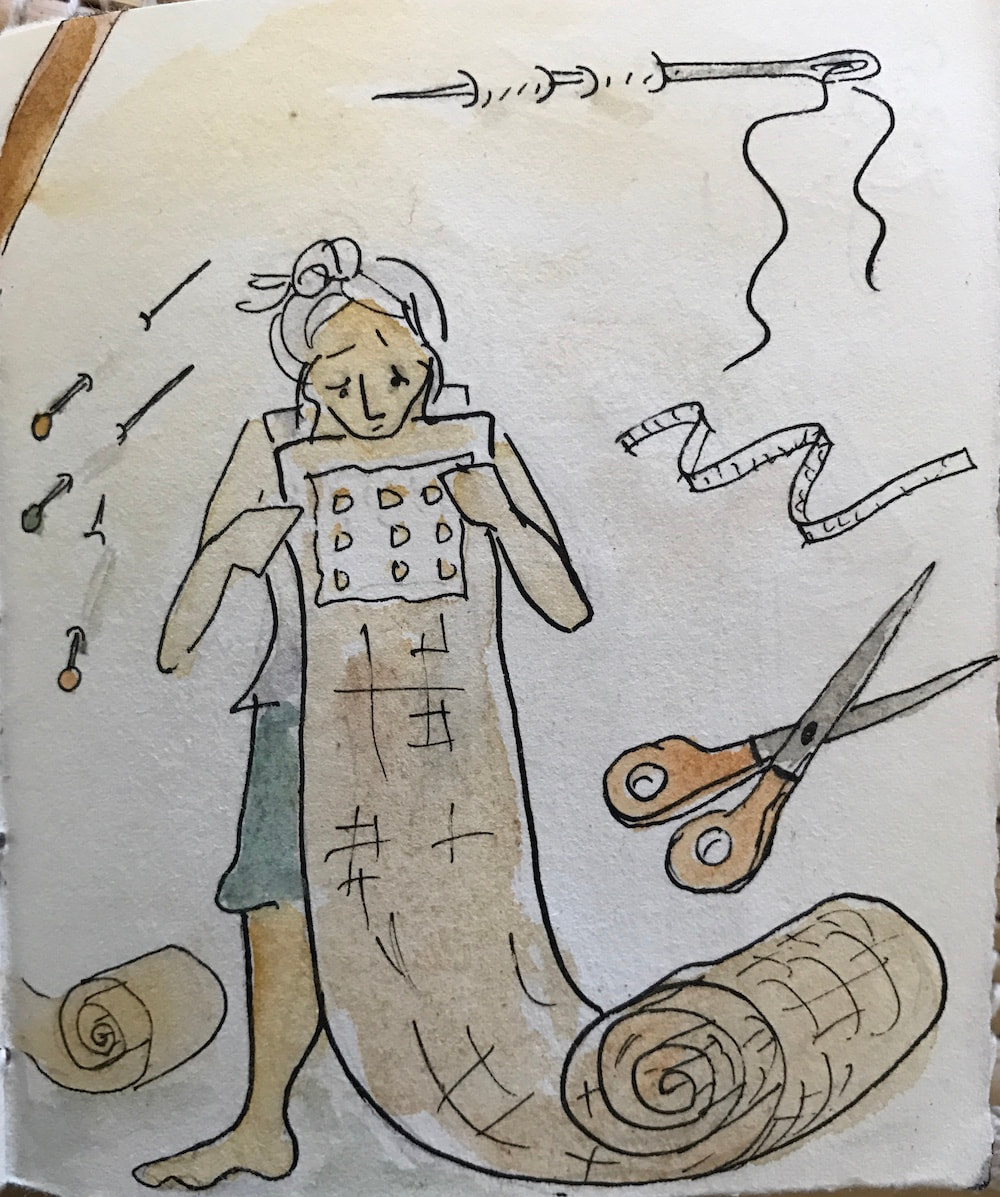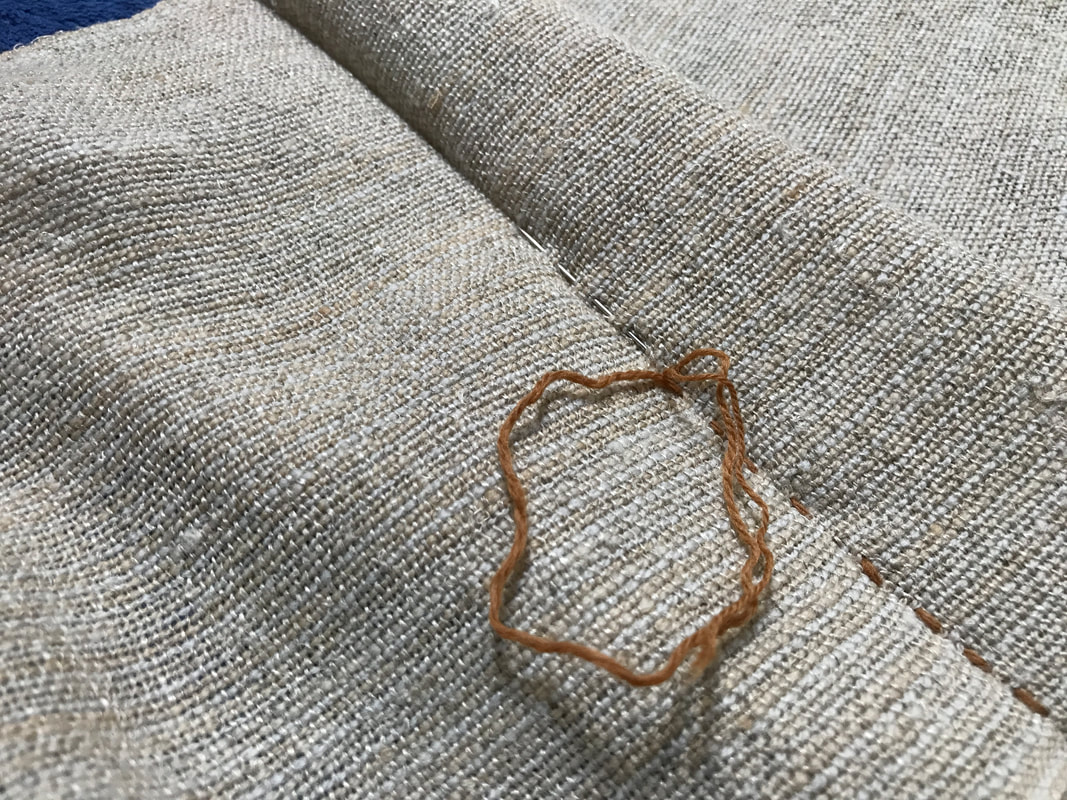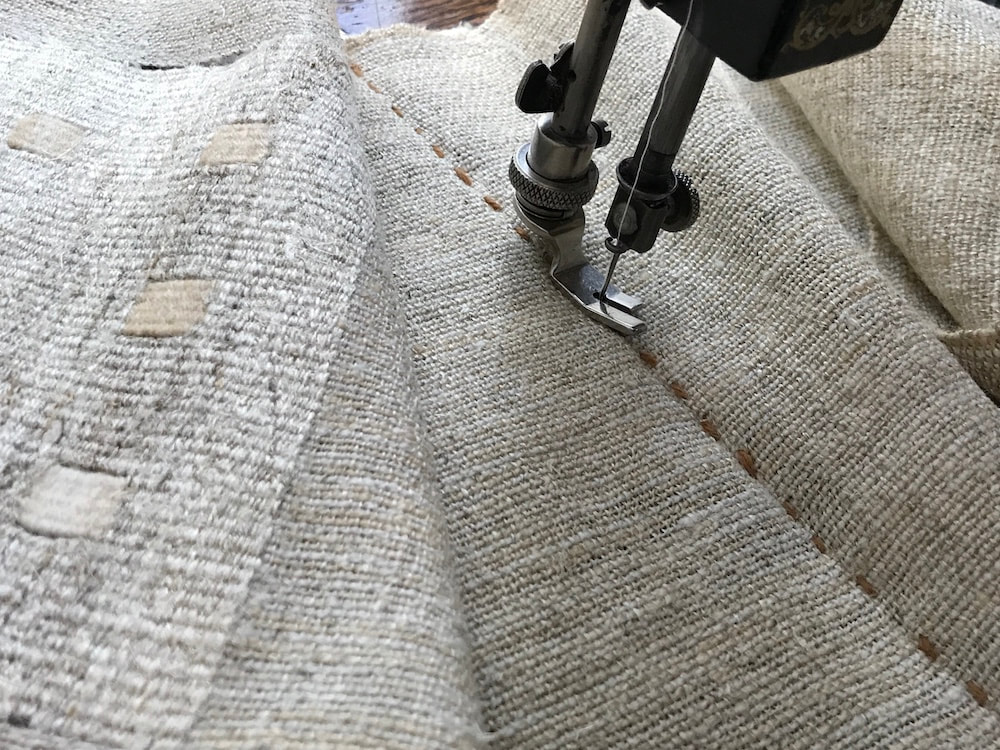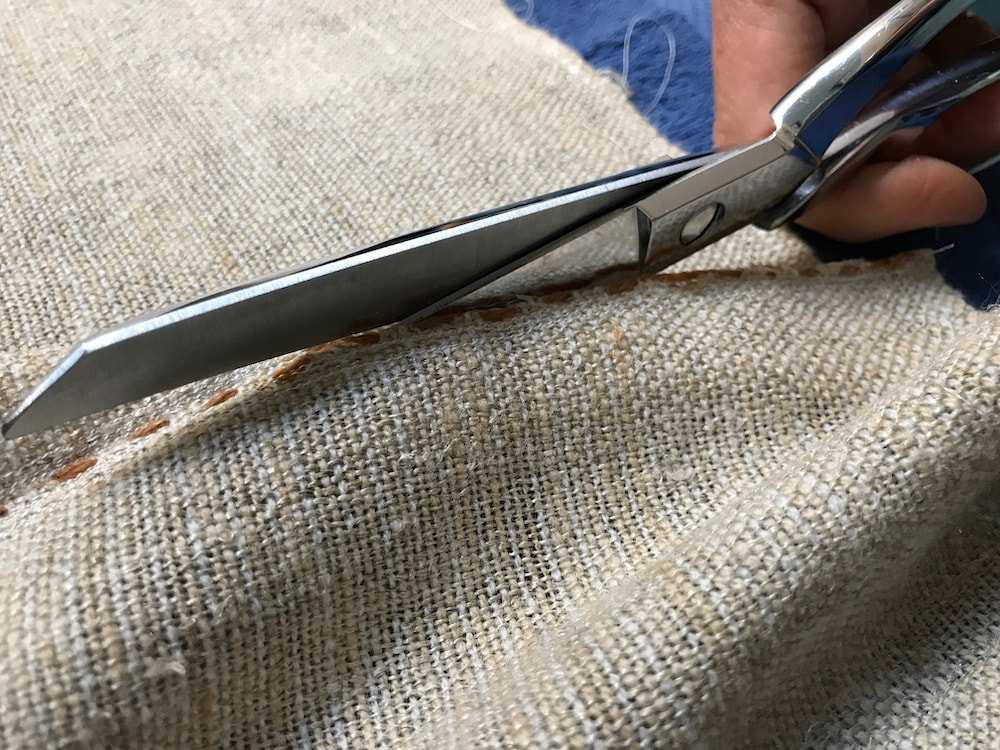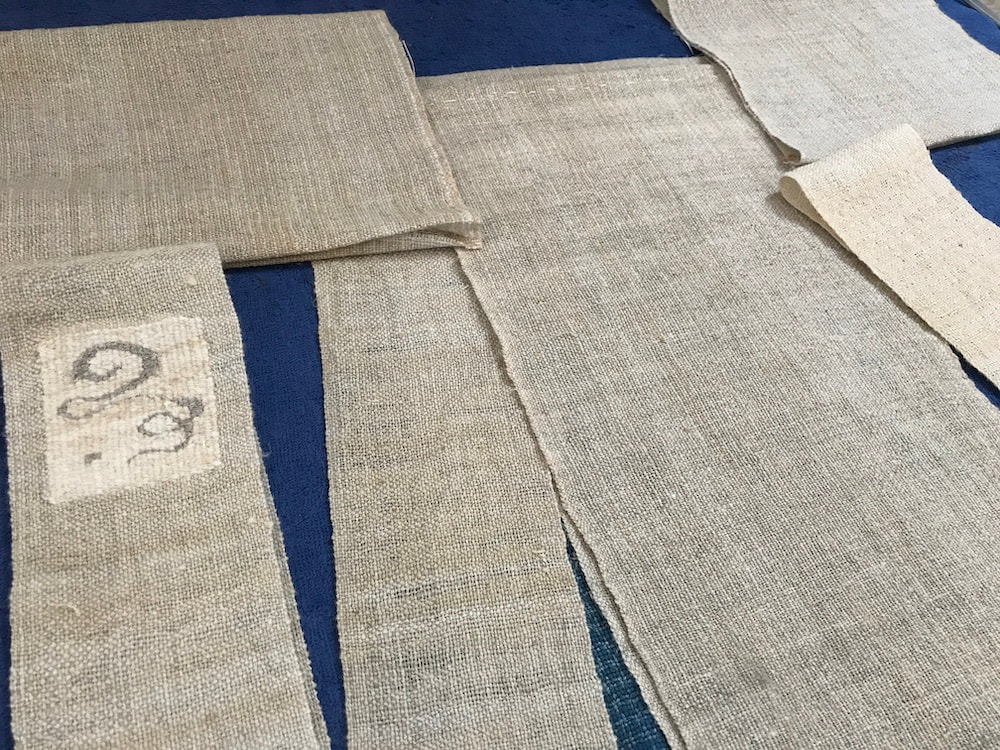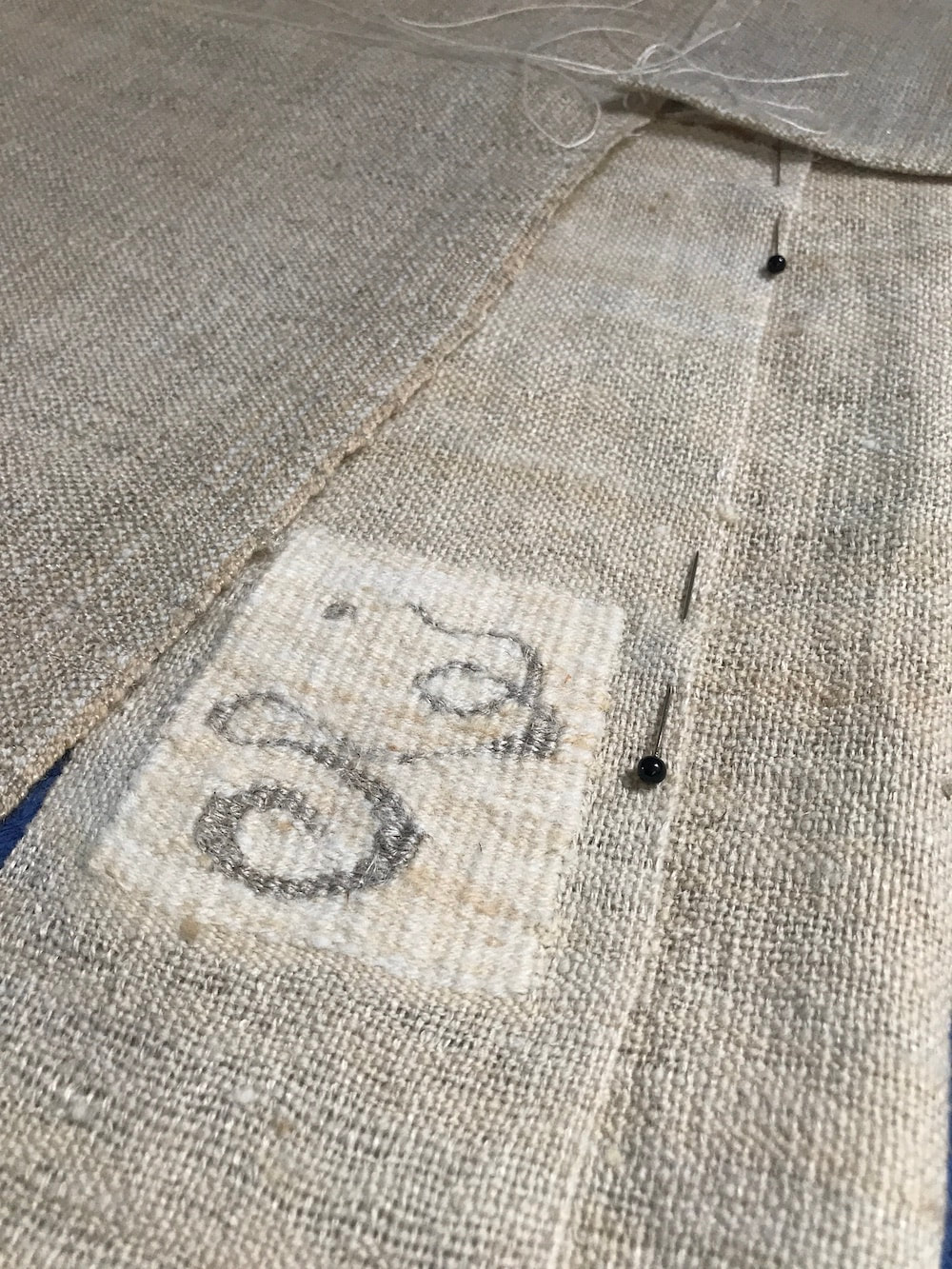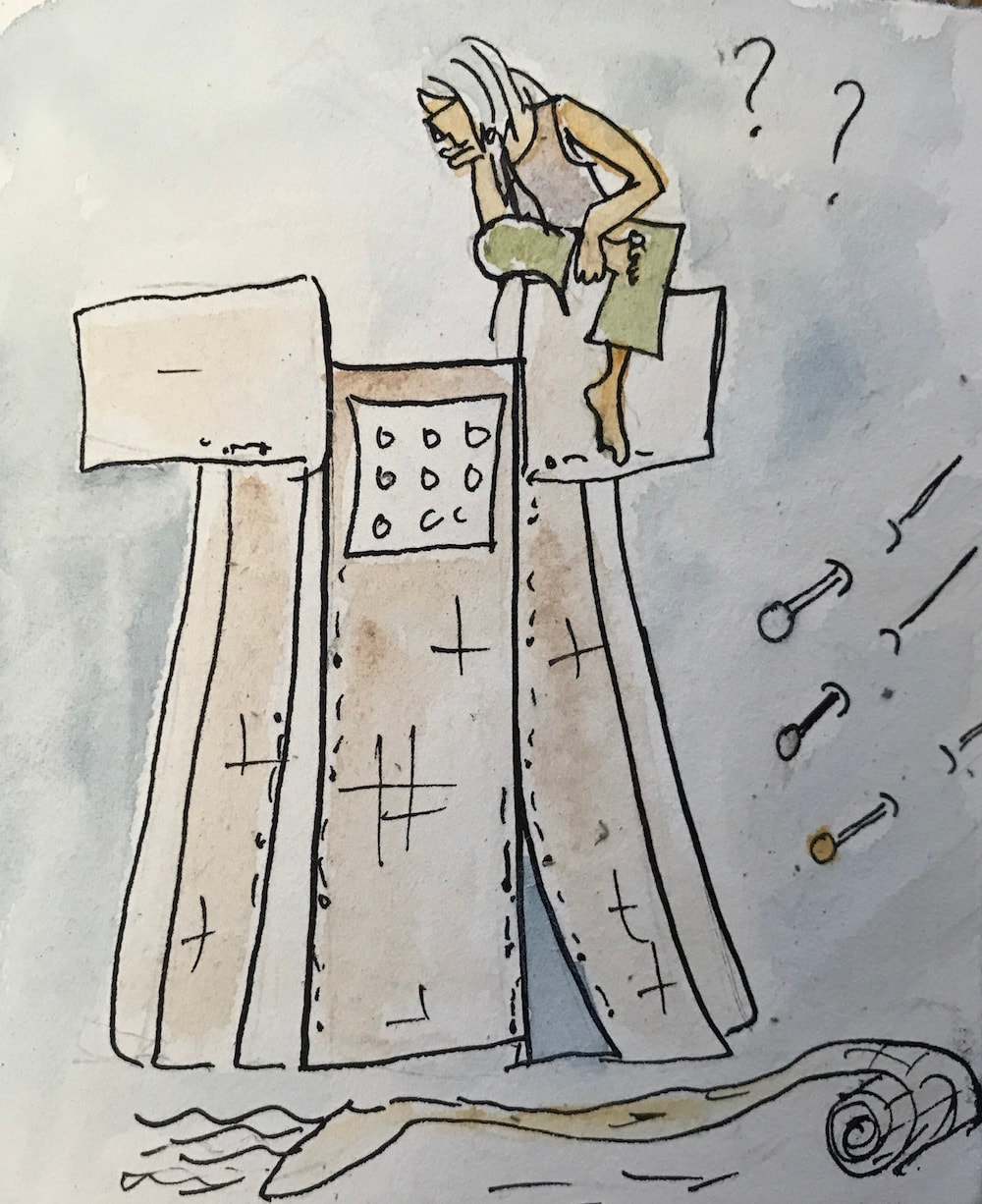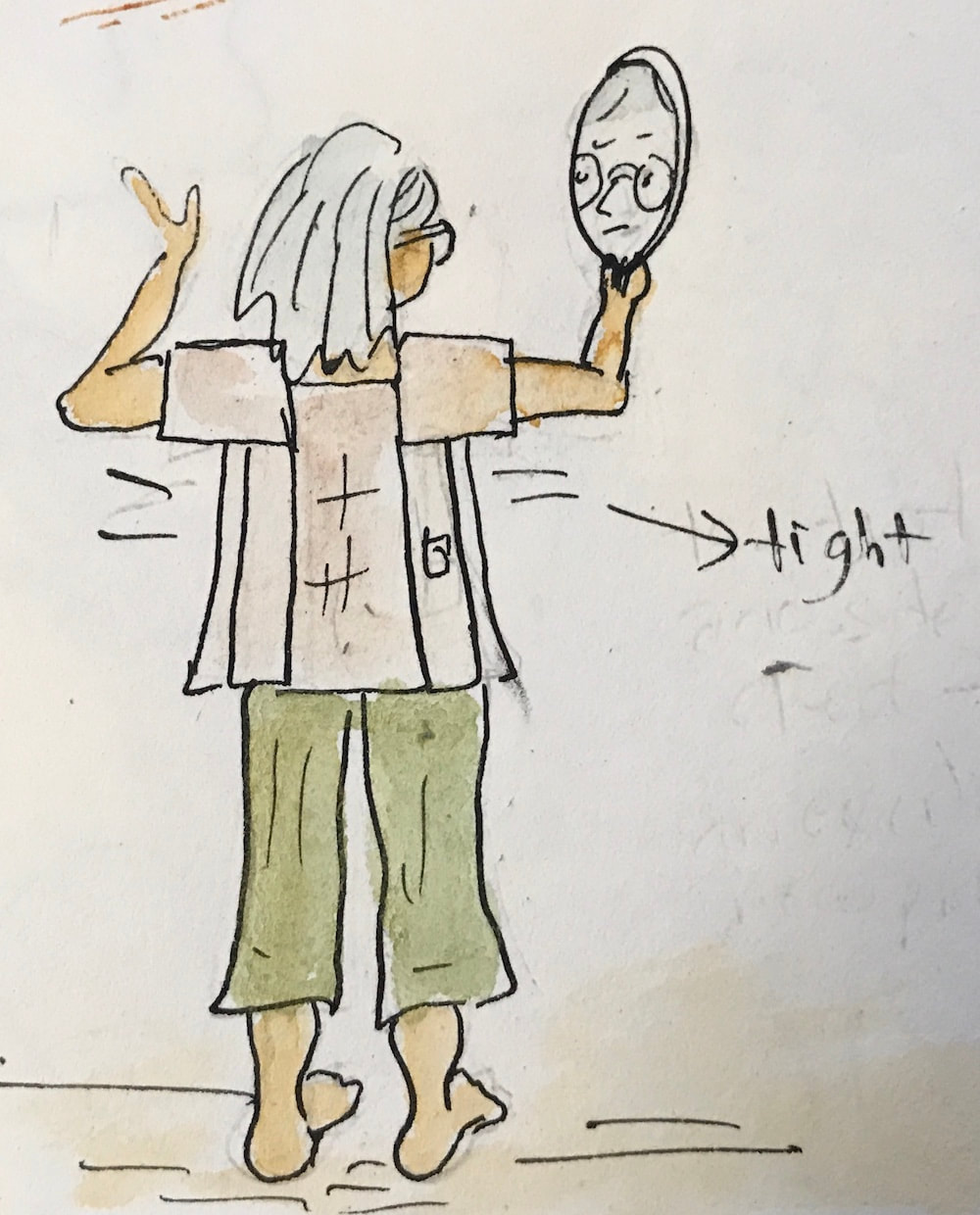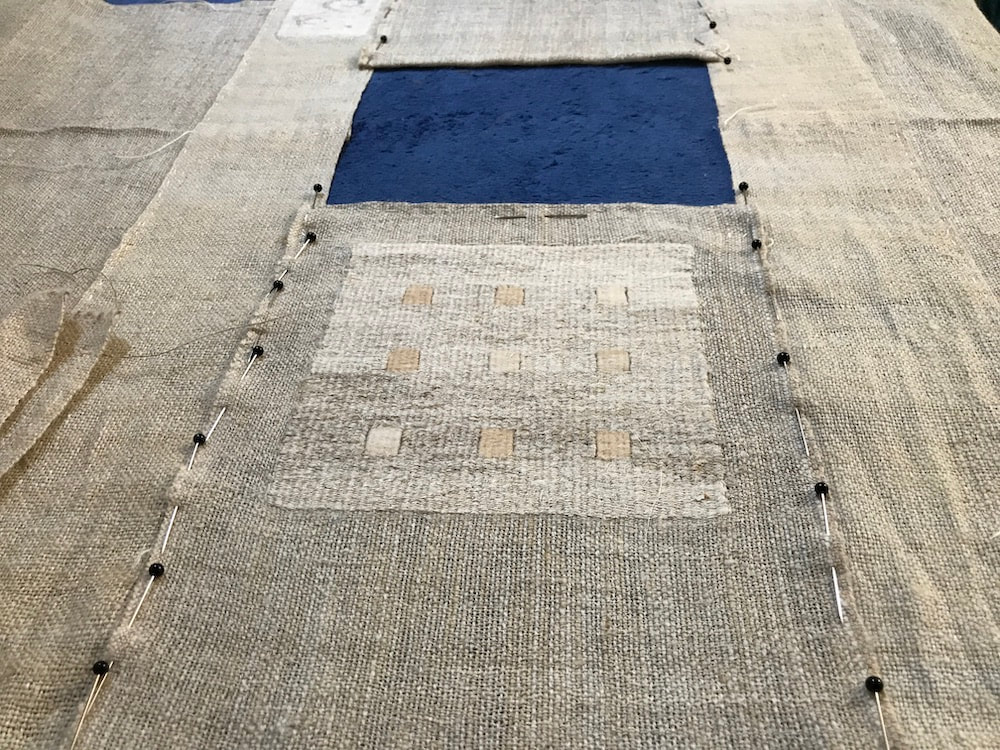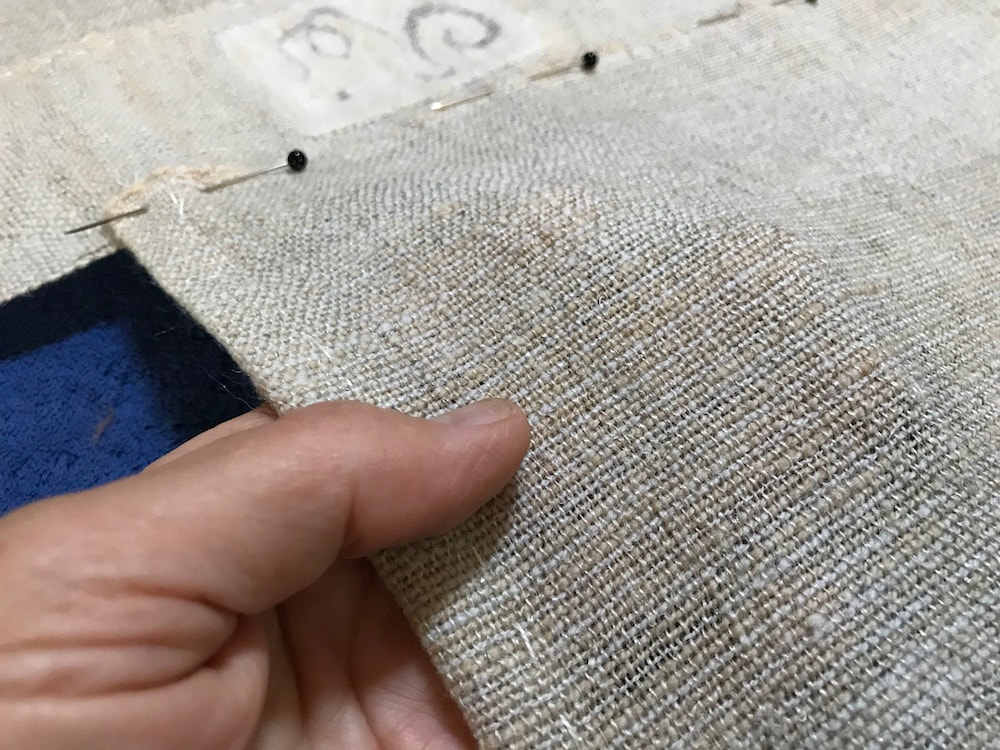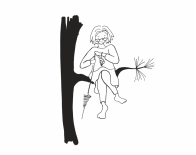I had hoped to have
a finished shirt today.
Alas, I should have known better.
The path from fiber forward
(or any path I follow for that matter),
rarely runs straight
and is almost never speedy--
which of course is often the point.
with some degree of comfort
seemed more than enough
when this all began,
and it wasn't until this past April
that I began to get serious about linsey woolsey,
so why should the sewing part go quickly?
I take that back.
I just typed "linsey-woolsey"
into the search box at the top of the blog page
and found that I wove some
back when I was first learning
to use a backstrap loom--
cloth I later used
in an entirely different
sort of experiment
in November 2016.
(that blog post written in hope, before the results were in).
Wasn't that attempt to combine
backstrap-woven linen/wool cloth
with some kind of imagery
part of the same endless quest
as the coptic-inspired tabby/tapestry
that keeps showing up in this project?
even if I'm unlikely
to throw an actual painting
(whatever the ground material)
into a tub of water and swish it around
to soften it up before cutting,
as I have these swaths of linen and wool.
with the juxtaposition of cloth and image
for decades and decades
and still ask a lot of different questions.
Right now, for instance
I want to know
how the combination
of linen and wool,
feels against my skin.
Linsey-woolsey has a bad reputation
and is often described
as rough inferior cloth--
the combination of linen and wool
highlighting the worst
both of the materials,
and of human power relationships.*
* Plantation Slave Weavers Remember: An Oral History by Mary Madison
is heartbreaking, humbling and un-put-downable (if that is a word)--
essential reading for me as a white woman, a human being and a weaver.
The end of the book includes valuable background
on the textiles that are spoken of in the text,
as well as extracts from
The Politics Of Textiles Used in African American Slave Clothing,
a paper by Eulanda A. Sanders given at a Textile Society of America Symposium.
by early American Colonists
and used in myriad textiles,
from clothing to coverlets
as a way to stretch
scarce and precious wool--
though usually not as a first choice.
the combination of wool and linen is Shatnez:
prohibited by Jewish law from being worn.
unearthed by archaeologist Albert Gayet
and exhibited at the Exposition Universelle de Paris 1900
may well have inspired
the wild and colorful paintings
of Henri Matisse and his fellow Fauves
at the turn of the last century.
all this history and judgement,
all this power and hardship
all this misery and mystery
and pictorial delight
associated with
this specific combination of materials
to which I am connected,
consciously and unconsciously,
willingly and abashedly,
in ways both historic
and of the moment.
It's also fascinating.
And with all that I learn
and hope to keep learning,
with all the things I want to change
about the world we live in,
and all the ways I want to make all lives better
I am still
a weaver devoted to wool,
and a spinner in love with linen,
coming to this cloth
with spindle and shuttle
pins, needles, thread,
and curiosity.
So here's what I know so far:
and basting before sewing
is a pretty great idea
when designing as you go--
or rather re-designing
for the third
(or maybe fourth)
time.
(targhee/debouillet)
and singles linen weft
(spindle spun and well scoured),
feels wonderful in my hands,
airy yet robust,
warm and cool and silky all at once,
and I very much look forward
to my future physical connection
with the weavers and wearers of this cloth
willing, and unwilling,
over the millennia.
Back eventually,
with a shirt!
